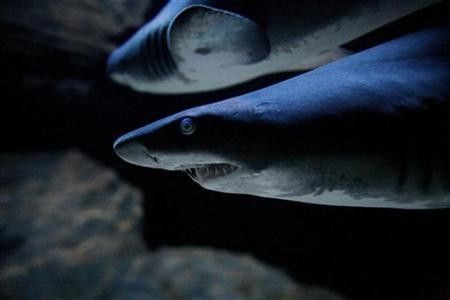Rare Pink Goblin Shark Found in the Gulf of Mexico

A rarely seen goblin shark was found in the Key West Coast of Florida by fishermen who took a picture of it before throwing it back to the sea because they fear its pre-historic look.
The bright-pink shark was said to be from the Gulf of Mexico. It was estimated 5.5 meters long with sharp teeth and is pre-historic looking. Fishermen caught the animal while catching shrimps in the Florida coast. It was, according to a report from the Houston Chronicle, the second sighting of the sea creature in the area following the sighting in 2004.
According to reports, fishermen plunged the net to catch fish at about 600 meters in the water. When they retrieved it, they found that the net caught the goblin shark. Carl Moore, one of the more or less 10 fishermen who had seen the shark species, took his smartphone and took pictures of the sea animal before they threw it back in the water.
On an interview published in The Sydney Morning Herald, Moore said he photographed it because his grandson loves sharks and he got a new smart phone. Though, he did not really know what kind of creature it was. He did not even tried to measure the animal because of its long and sharp teeth which he said to be dangerous as it can damage anything it bit.
The goblin shark was found in April 16 but Moore reported it to the National Oceanic and Atmospheric Administration (NOAA) just recently. The shark caught the scientists' interest.
"This is great news...This is only the second confirmed sighting in the Gulf. The majority of specimens are found off Japan or in the Indian Ocean and around South Africa," said NOAA shark expert John Carlson on another interview.
Though, the scientists were disappointed that they did not have the chance to learn more about the sea creature.
Goblin sharks live in the deep ocean and have less interaction with humans. NOAA said they are mostly found in Japan but also inhabit the seas and oceans of Australia. The sharks' unique features are their pink colour and their long snout which hides its sharp teeth. Their snout was said to have electrical sensors that can detect their prey.
The shark is listed as of "least concern" on the World Conservation Union's endangered list.
Related Post:
Monstrous Great White Shark Threatens Australia's Beaches




















